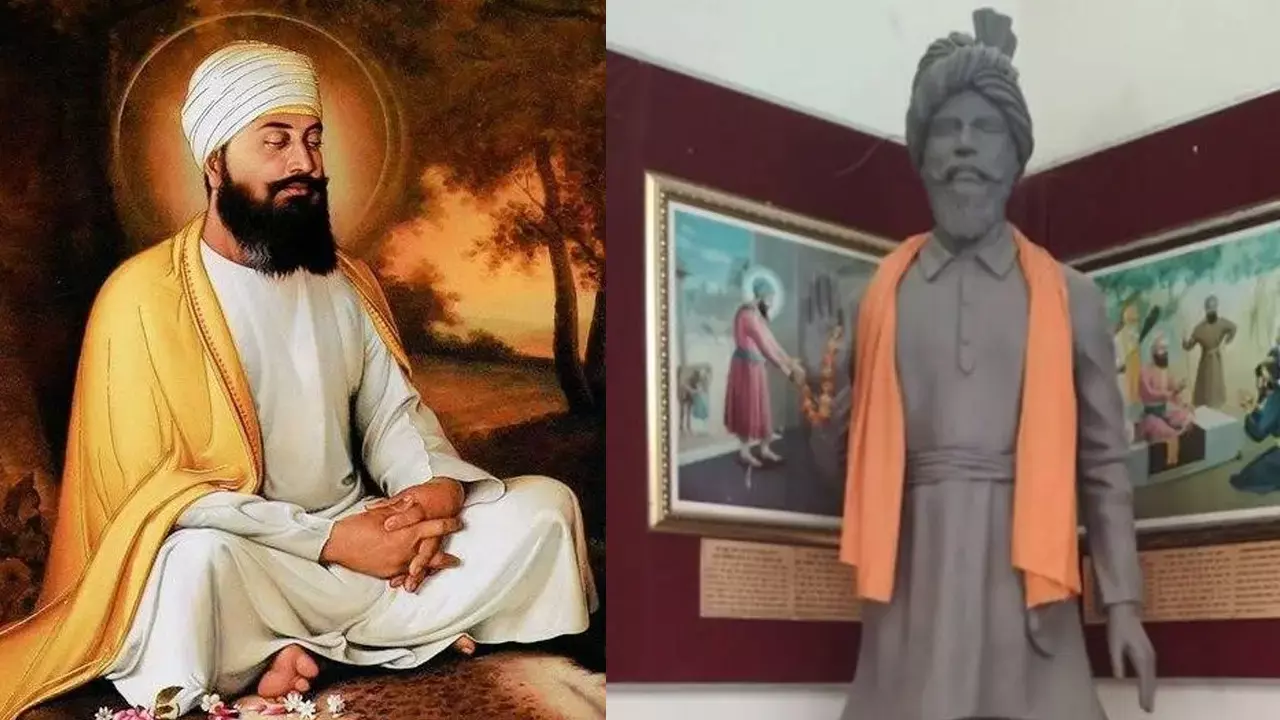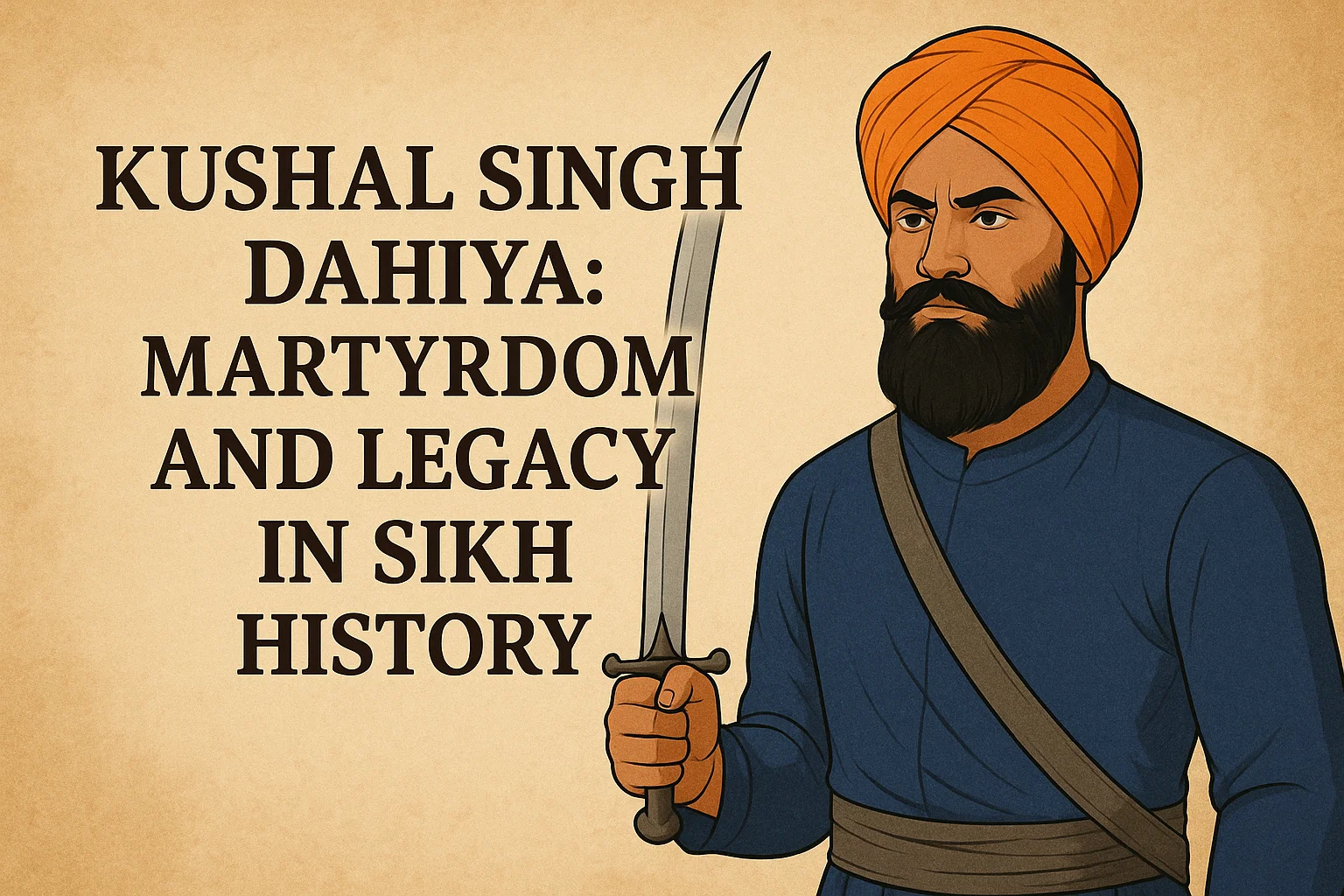Kushal Singh Dahiya: Martyrdom and Legacy in Sikh History
Discover the inspiring story of Dada Kushal Singh Dahiya, the brave devotee of Guru Tegh Bahadur who sacrificed his life in 1675 to safeguard the Guru’s severed head from Mughal desecration. Learn about his legacy, courage, and Haryana’s 350th Balidaan Diwas celebrations.
Kushal Singh Dahiya
The Haryana government is set to commemorate the 350th Balidaan Diwas (Martyrdom Day) of Dada Kushal Singh Dahiya on November 14 in Sonipat district. This observance is part of a broader initiative marking the 350th martyrdom anniversary of Guru Tegh Bahadur, the ninth Sikh Guru, who laid down his life in 1675 to uphold the right to religious freedom.
Who was Kushal Singh Dahiya?
Dada Kushal Singh Dahiya was a devout follower of Guru Tegh Bahadur, the ninth Guru of Sikhism, known for his unflinching courage and faith. His act of supreme sacrifice is forever linked to the Guru’s martyrdom during the reign of Mughal emperor Aurangzeb, whose oppressive policies sought to impose religious conformity.
After Guru Tegh Bahadur was publicly executed in Delhi’s Chandni Chowk for defending the Kashmiri Pandits’ right to practice their faith, the Mughal authorities sought to make an example of him. His severed head was displayed publicly to instil fear among those who resisted forced conversions. However, his followers were determined to prevent this desecration and ensure the Guru’s remains received a respectful cremation as per Sikh tradition.
In this dire moment, Kushal Singh Dahiya, a native of Sonipat (Haryana) and a loyal devotee, undertook an extraordinary act of self-sacrifice. When the plan was made to transport the Guru’s head to Anandpur Sahib for proper cremation, Kushal Singh offered his own head as a decoy to protect the Guru’s.

The Heroic Sacrifice
Kushal Singh Dahiya’s supreme act of devotion stands as one of the most profound moments in Sikh history. As Mughal pursuers sought to recover the Guru’s head, Dahiya selflessly offered himself to mislead them. His head was presented to the Mughal soldiers, who believed they had recovered the Guru’s remains, while the real head—carried by Bhai Jaita (later Bhai Jiwan Singh)—was transported safely to Anandpur Sahib.
There, Guru Gobind Singh, the tenth Sikh Guru and son of Guru Tegh Bahadur, performed the final rites with full honour and reverence. This act not only preserved the dignity of Guru Tegh Bahadur’s martyrdom but also symbolised the unwavering resolve of his followers to uphold truth, justice, and faith even in the face of death.
Kushal Singh Dahiya’s sacrifice was not one of war or combat, but of conscious, voluntary martyrdom—an offering of life for the sanctity and spiritual integrity of his Guru. His name thus holds a special place among the great martyrs of Sikh history, representing courage, loyalty, and devotion beyond measure.
Legacy and Modern Recognition
Dada Kushal Singh Dahiya’s legacy continues to inspire generations. His sacrifice is seen as a symbol of Haryana’s contribution to Sikh and Indian heritage, reminding the nation that devotion and courage transcend regional or religious boundaries.
The Haryana government’s decision to observe the 350th Balidaan Diwas in his honour seeks to revive and institutionalise the memory of this selfless act. Commemorative events in Sonipat district include cultural programmes, historical exhibitions, and public tributes highlighting Dahiya’s role in protecting Sikh dignity.
Historians and Sikh scholars recognise his martyrdom as an act of universal significance, symbolising resistance against tyranny and the defence of human dignity. His story also reinforces Guru Tegh Bahadur’s ideals of religious freedom and sacrifice, which remain cornerstones of India’s pluralistic ethos.
Conclusion
Dada Kushal Singh Dahiya’s martyrdom remains one of the most poignant chapters in Sikh and Indian history. His fearless devotion and willingness to lay down his life for his Guru epitomise the spirit of selflessness and righteousness that defines Sikh philosophy. As India observes his 350th Balidaan Diwas, it is not merely an act of remembrance—it is a reaffirmation of the eternal values of faith, courage, and human dignity that Dahiya so nobly upheld.
Subscribe to our Youtube Channel for more Valuable Content – TheStudyias
Download the App to Subscribe to our Courses – Thestudyias
The Source’s Authority and Ownership of the Article is Claimed By THE STUDY IAS BY MANIKANT SINGH

